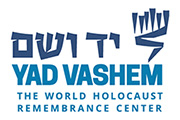The Holocaust of Hungarian Jews in Light of the Research of Randolph Braham
The Politics of Genocide: The Holocaust in Hungary is an enlarged and revised edition of The Wartime System of Labor Service in Hungary: Varieties of Experiences, published in 1994 by the most prominent scholar of the Holocaust of Hungarian Jewry. It dwells on a central question. That is, by 1942 Hungarian Jewish leaders knew about the mass murders in Auschwitz and by 1944, probably most other Jews, did as well. Yet, the leaders did nothing, either to prevent such a fate or to encourage resistance. The author explains that assimilation before World War I may explain the Jews’ reluctance to confront officialdom, even as anti-liberal regimes fostering antisemitism and eventually National Socialism, arose. Nevertheless, in 1941 deportees from surrounding countries were well received by the Jews. By 1942 foreign Jews were being deported and murdered by Einsatzgruppen (special task forces) and Jews were massacred in Budapest. The German occupation of Hungary in 1944 spelled a death sentence for Hungarian Jewry with Eichmann directing the transports to Auschwitz. The Halutz movement failed to widely distribute the Auschwitz Protocols, to warn both Budapest and peripheral communities of the horrors of Auschwitz. Successful rescue operations, such as Kasztner’s controversial action and the Halutz movement’s efforts, were few. After Soviet liberation, antisemitism surged in Hungary. This trend was reversed only in 1989.
